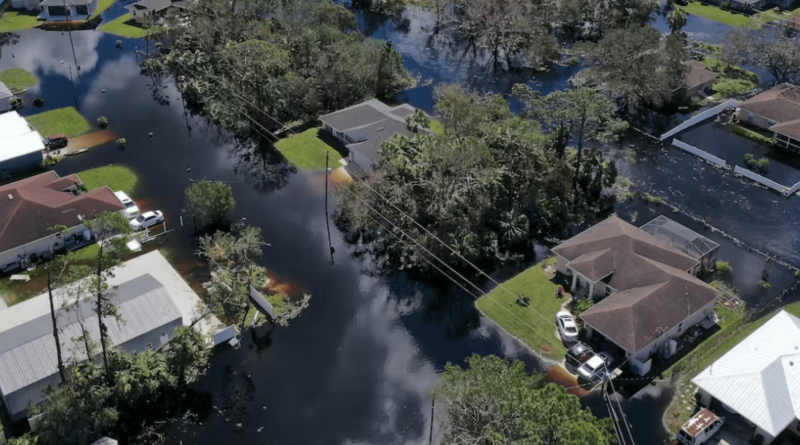As climate change increases flood risks, Floridians are alarmingly underinsured
As floodwaters recede and the extent of Debby’s damage becomes clearer, Floridians in the Gulf Coast are left grappling with the financial fallout, an important reminder of the fragile nature of Florida’s insurance industry. Current estimates of flood insurance claims after Hurricane Debby are expected to be between $1 and $2 billion. Meanwhile, only 12% of the nearly 9 million properties across the state have flood insurance. This stark reality underscores a critical issue—Florida, the most flood-prone state in the nation, is alarmingly underinsured.
Florida faces a critical challenge with its current flood insurance system, which is proving woefully inadequate for the risks at hand. Hurricane Debby is just one example of the potential devastation that can occur, leaving many Floridians financially vulnerable in its wake. However, this is merely a symptom of a larger, more pressing issue that affects all property owners, regardless of proximity to the coast.
For those unfamiliar with Florida’s topography, flooding can occur anywhere, from coastal areas to inland regions, due to our unique geography, low elevation, and susceptibility to various types of extreme weather. Heavy rainfall, storm surge, rising sea levels, and even sunny day flooding in some areas all contribute to this pervasive threat. Yet, despite these risks, a significant portion of Florida’s population remains underinsured or completely uninsured against flood damage. Roughly 19 percent of Monroe County’s land in the Florida Keys could flood, threatening $700 million in real estate and buildings.
As I’ve previously written about, some insurance companies have pulled out of the Sunshine State leaving homeowners without flood coverage. Some property owners, based on updated FEMA flood maps, were reassured they were no longer in the flood zone. You can guess what happened; they dropped their coverage. Unfortunately, as Debby has shown, those maps might not fully reflect the new realities brought on by climate change. The storms are changing, becoming more intense, more unpredictable, and capable of causing damage far beyond what we’ve come to expect from their category ratings.
The disconnect between FEMA’s flood maps and the realities of climate change has exacerbated Florida’s already urgent insurance crisis. As these maps fail to capture the full extent of emerging flood risks, residents who dropped their flood insurance based on this false sense of security are left dangerously exposed. Meanwhile, the insurance industry, not blind to reality and already grappling with the escalating costs of climate-related damage, is retreating from our high risk market, further reducing coverage options and driving up costs for those who remain insured.
Their retreat from the state leaves homeowners with fewer options and higher costs.
As Florida grapples with this growing crisis, it’s clear that a multifaceted approach is needed. This may include updating flood risk assessments, encouraging more private market participation, and implementing stricter building codes and flood mitigation measures. Additionally, there’s a pressing need for public education about flood risks and the importance of adequate insurance coverage. And our elected officials at all levels of government need to get behind a climate solutions plan that will protect our state’s people, property, and economy.
As climate change continues to reshape the state’s landscape and increase flood risks, the time for action is now. Florida must find a way to make flood insurance both accessible and affordable for all its residents, ensuring that the Sunshine State doesn’t find itself underwater – both literally and financially.
Originally written for and publish on The Invading Sea

